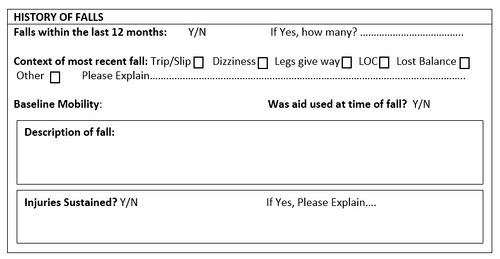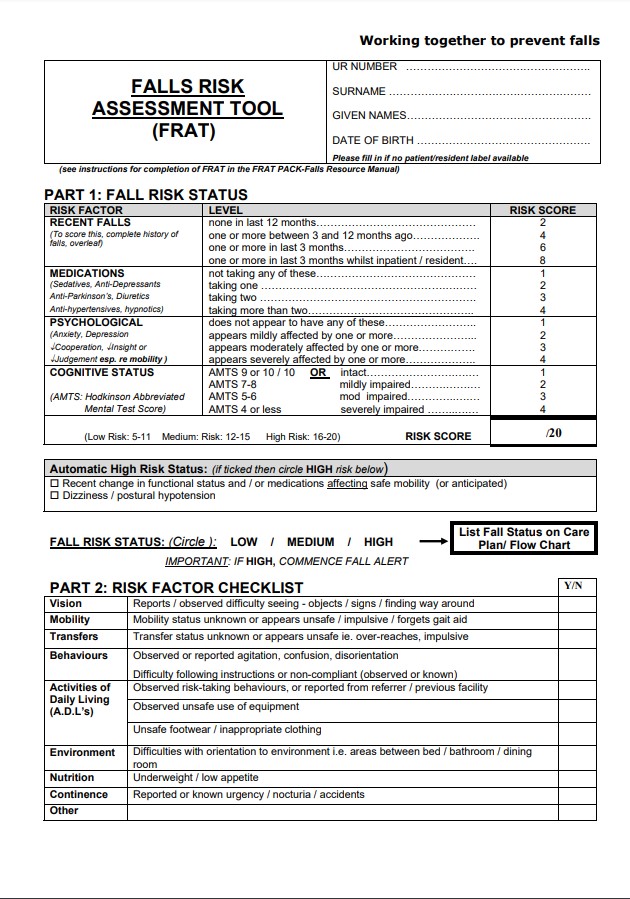Examine This Report on Dementia Fall Risk
Table of ContentsAbout Dementia Fall RiskSome Known Questions About Dementia Fall Risk.How Dementia Fall Risk can Save You Time, Stress, and Money.Facts About Dementia Fall Risk Revealed
A loss danger evaluation checks to see how most likely it is that you will drop. It is mostly done for older grownups. The evaluation typically includes: This includes a series of inquiries concerning your overall wellness and if you have actually had previous falls or troubles with balance, standing, and/or strolling. These tools examine your stamina, balance, and stride (the means you walk).STEADI consists of screening, analyzing, and treatment. Treatments are recommendations that may decrease your danger of dropping. STEADI includes 3 actions: you for your danger of falling for your danger elements that can be enhanced to attempt to stop falls (for instance, equilibrium issues, damaged vision) to decrease your danger of dropping by utilizing reliable strategies (for instance, providing education and sources), you may be asked numerous questions including: Have you dropped in the past year? Do you feel unsteady when standing or walking? Are you fretted about falling?, your company will certainly examine your stamina, balance, and gait, using the following autumn assessment tools: This test checks your stride.
If it takes you 12 secs or even more, it may imply you are at higher threat for an autumn. This test checks strength and equilibrium.
Move one foot halfway ahead, so the instep is touching the big toe of your other foot. Move one foot totally in front of the various other, so the toes are touching the heel of your other foot.
The Single Strategy To Use For Dementia Fall Risk
A lot of falls happen as an outcome of several adding factors; as a result, managing the danger of dropping begins with determining the variables that add to fall danger - Dementia Fall Risk. Several of the most appropriate danger variables include: History of previous fallsChronic medical conditionsAcute illnessImpaired stride and balance, reduced extremity weaknessCognitive impairmentChanges in visionCertain high-risk medicines and polypharmacyEnvironmental aspects can also increase the risk for falls, including: Insufficient lightingUneven or damaged flooringWet or unsafe floorsMissing or harmed handrails and get hold of barsDamaged or incorrectly equipped tools, such as beds, mobility devices, or walkersImproper use assistive devicesInadequate guidance of individuals living in the NF, consisting of those that display hostile behaviorsA effective autumn risk monitoring program calls for a comprehensive scientific assessment, with input from all participants of the interdisciplinary team

The treatment strategy ought to also include interventions that are system-based, such as those that advertise a safe atmosphere (suitable lighting, hand rails, order bars, and so on). The efficiency of the treatments ought to be examined regularly, and the care strategy modified as needed to show adjustments in the fall threat assessment. Executing an autumn threat administration system making use of evidence-based finest method can lower the frequency of drops in the NF, while limiting the possibility for fall-related injuries.
How Dementia Fall Risk can Save You Time, Stress, and Money.
The AGS/BGS guideline advises evaluating all grownups aged 65 years and older for autumn danger each year. This screening is composed of asking clients whether they have fallen 2 or even more times in the previous year or sought medical focus for a fall, or, if they have actually not fallen, whether they really feel unsteady when walking.
People that have actually fallen when without injury needs to have their balance and stride assessed; those with stride or balance problems should receive extra analysis. A background of 1 loss without injury and without gait or equilibrium troubles does not require more assessment beyond ongoing annual autumn danger testing. Dementia Fall Risk. A fall risk evaluation is needed as component of click here now the Welcome to Medicare exam

The 9-Minute Rule for Dementia Fall Risk
Documenting a falls background is one of the top quality indications for fall avoidance and management. A vital component of risk assessment is a medicine evaluation. Several courses of drugs boost autumn risk (Table 2). Psychoactive drugs particularly are independent forecasters of falls. These medications often tend to be sedating, modify the sensorium, and hinder balance and gait.
Postural hypotension can frequently be reduced by minimizing the dosage of blood pressurelowering drugs and/or quiting medicines that have orthostatic hypotension as an adverse effects. Use above-the-knee support tube and resting with the head of the bed elevated may also lower postural decreases in high blood pressure. The preferred elements of a fall-focused physical examination are revealed in Box 1.

A TUG time higher than or equivalent to 12 seconds suggests high autumn risk. Being not able to stand up from a chair of knee height without utilizing one's arms indicates enhanced autumn danger.